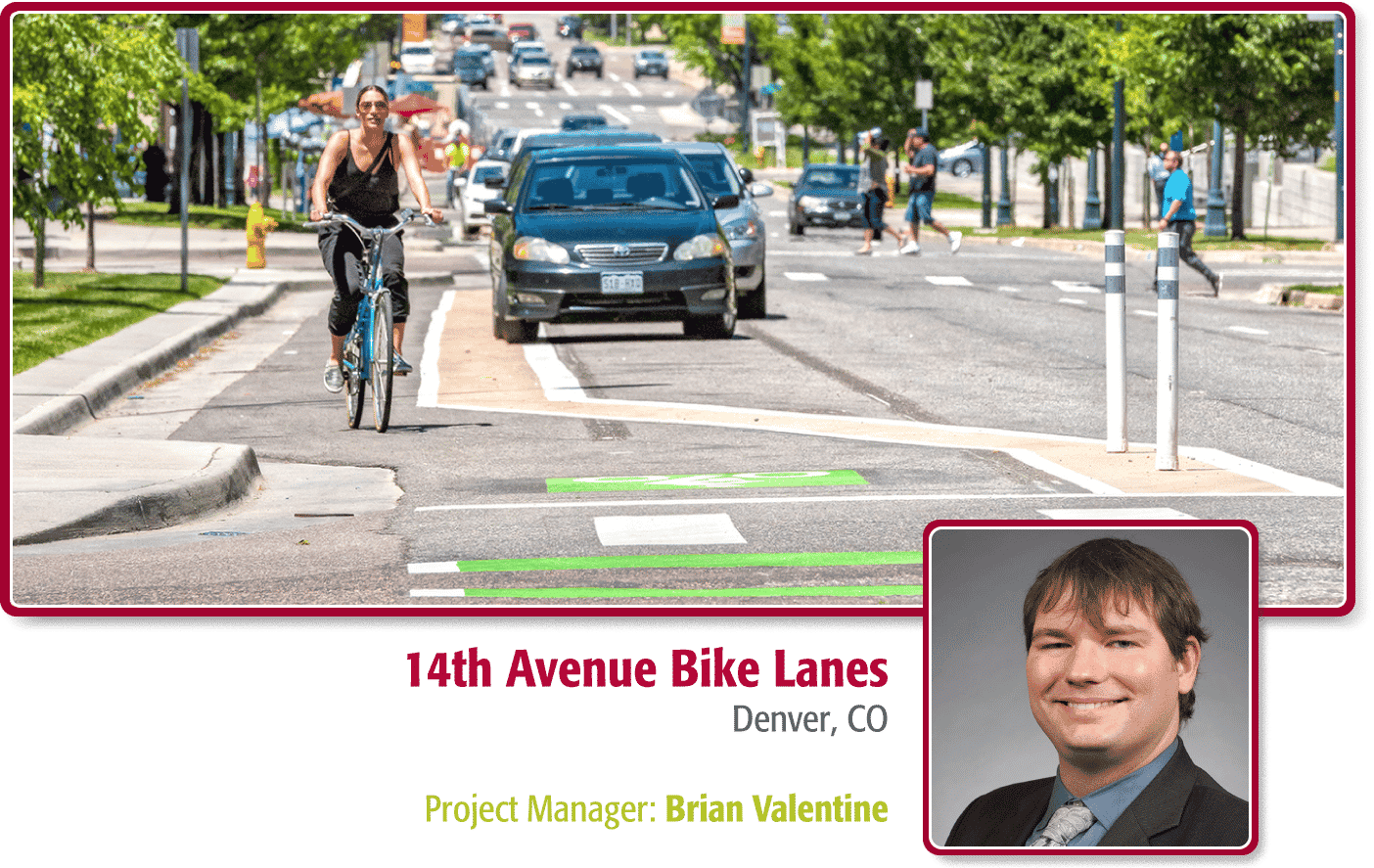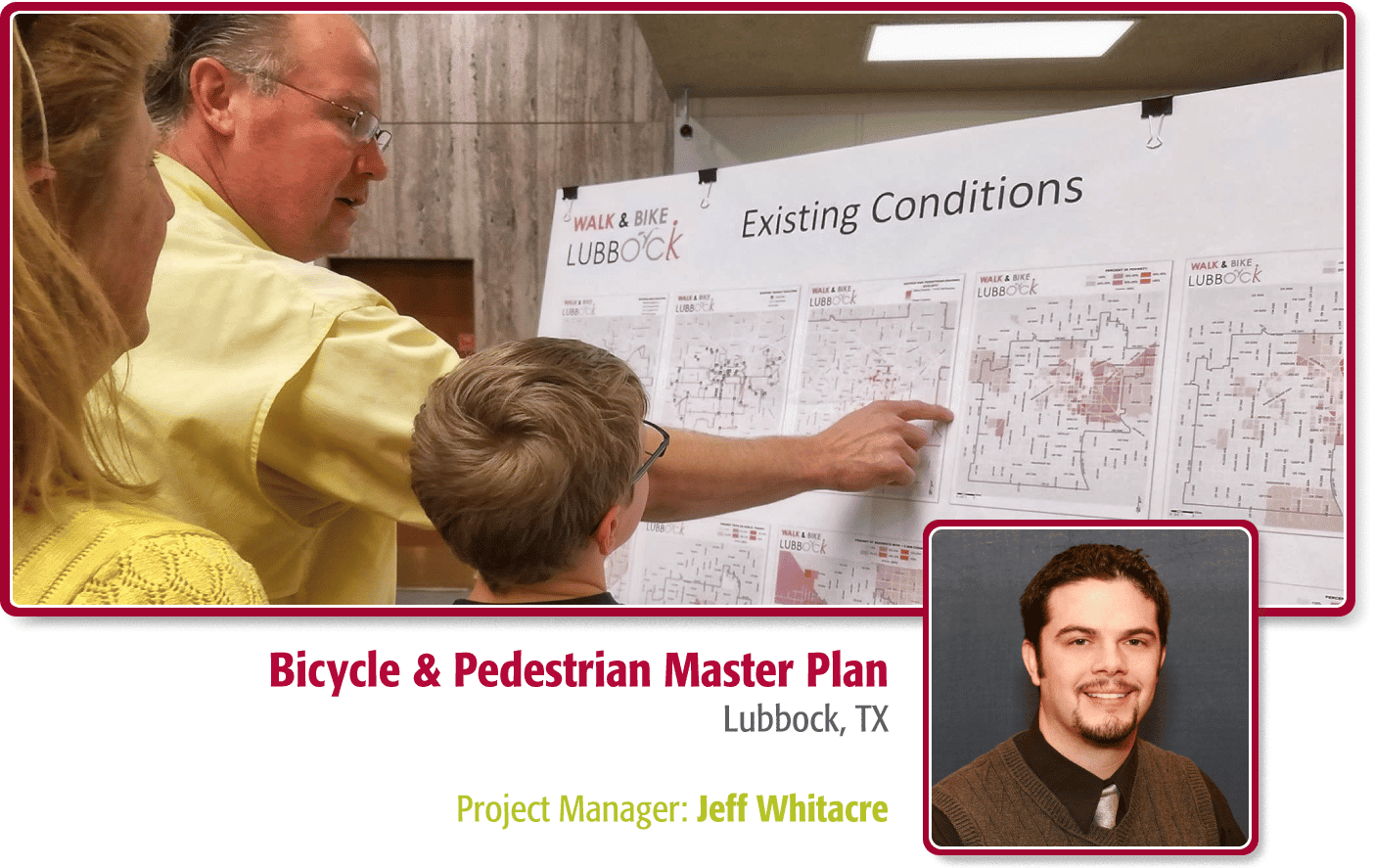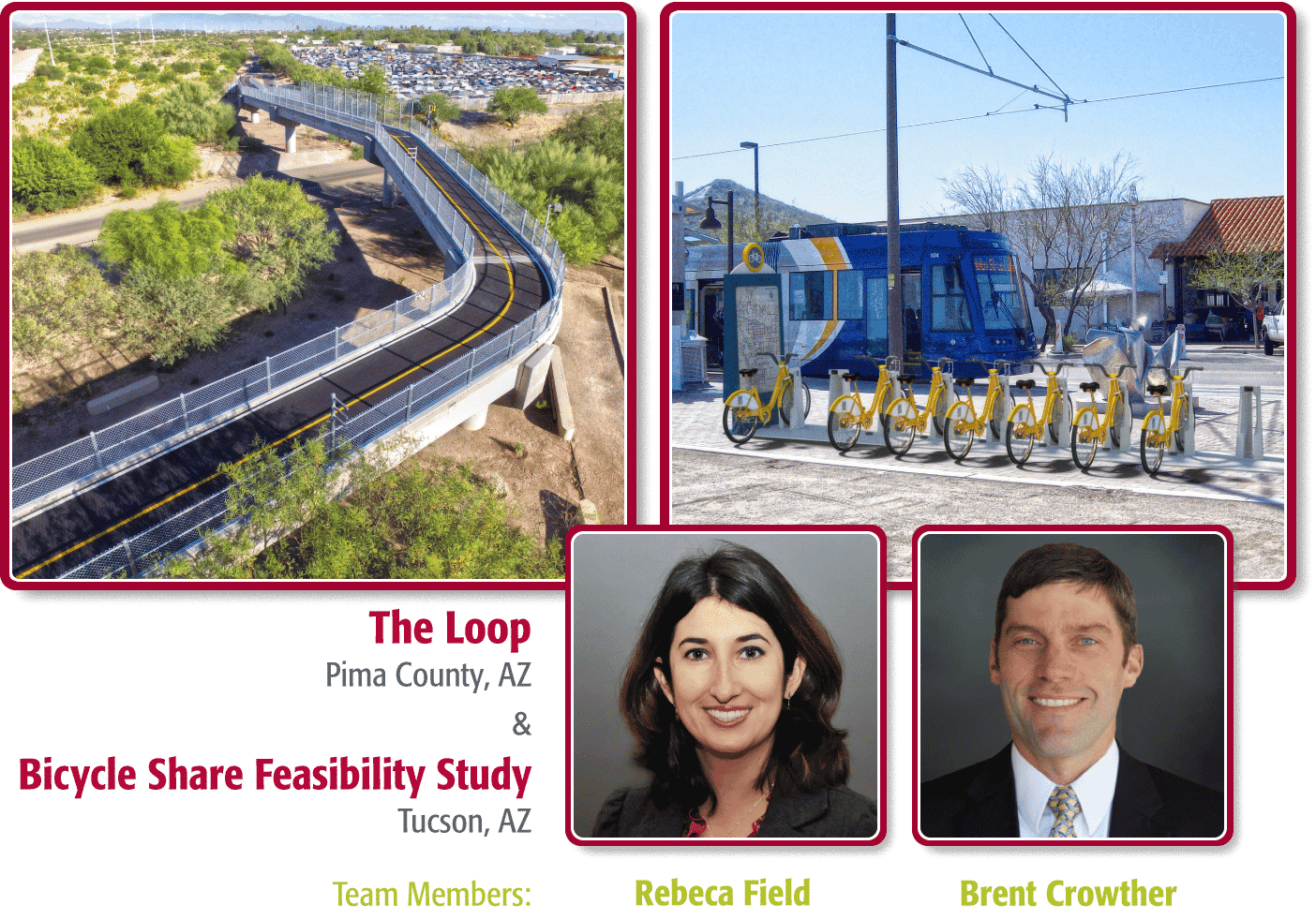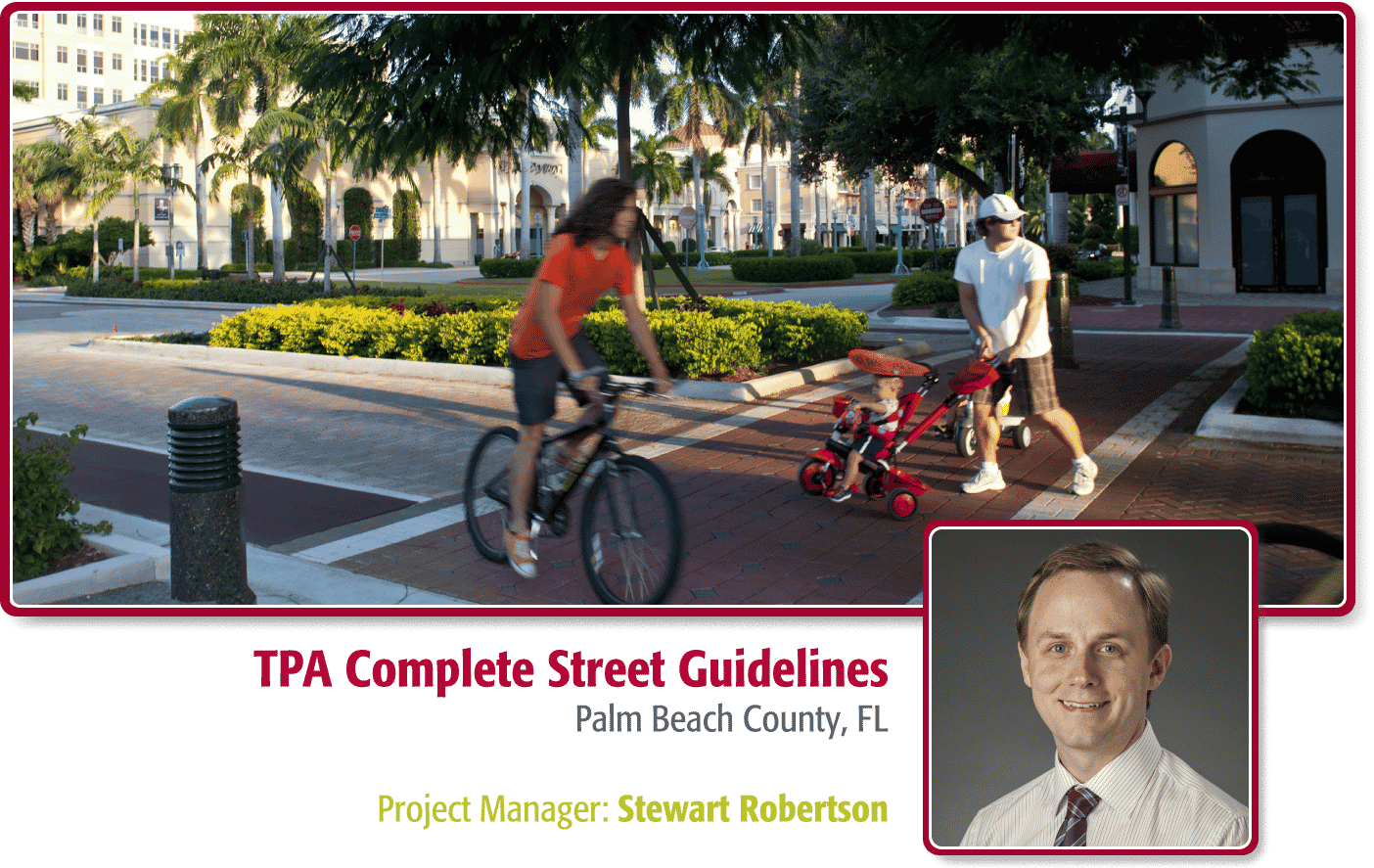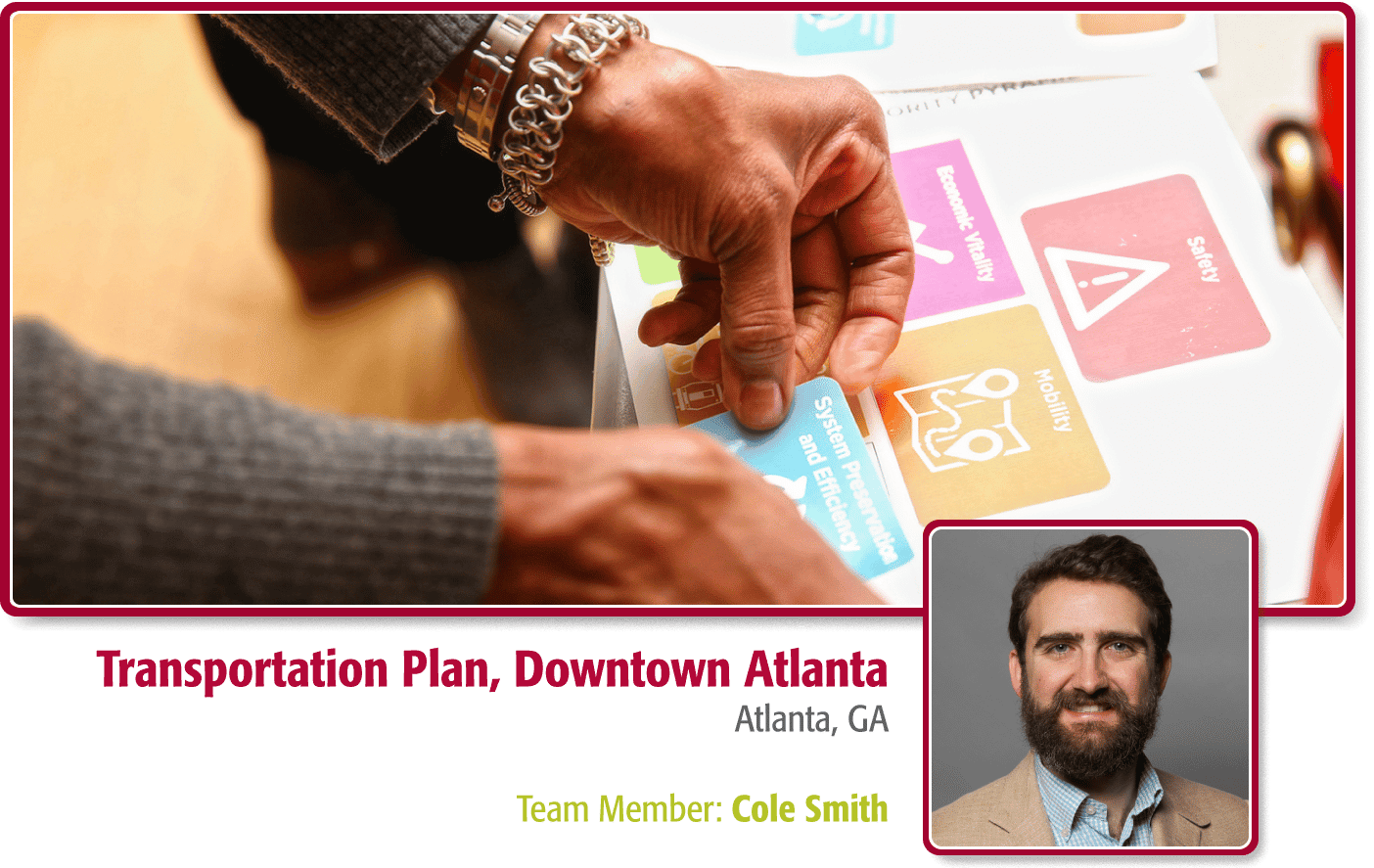May is National Bike Month! In celebration, we’ve spotlighted some of the great bike-related work being done at Kimley-Horn. From bike lanes to bike shares, we serve the bike-related needs of clients around the country. Click on the stops along the bike path to learn more.
Question: The number of people moving to Denver has increased significantly in the last few years. In your work on the 14th Avenue Bike Lanes for the City and County of Denver, how did you develop bike infrastructure that meets the needs of this growing community?
Brian: When planning for the 14th Avenue Bike Lanes, connectivity and efficiency of space led much of the design process. A big part of the process involved looking at where facilities already existed, and taking note of where people were already traveling by bike. The City wants to implement enhanced bikeway corridors where there is a clear need and where it makes sense. A focus for many of these improvements is to engage the 60% of the American population that’s interested, but concerned, when it comes to biking—which adding enhanced facilities promotes.
Question: Hearing the opinions and ideas of the community is an important part of planning bike lanes. In what way was the community involved throughout the planning process?
Brian: Our initial work with the City and County of Denver on planning and design efforts for enhanced bike facilities started with a partnership with Josh Mehlem, who was with Alta at the time, but is now with Apex Design. We held a three-day charrette and interviewed local biking advocacy groups in addition to land owners, developers, city planners, and other stakeholders. We also held a community outreach event at REI, where members of the community voted on which bike facilities corridors to prioritize. The first facility was completed in 2015, and we’re using the lessons learned from that initiative—and new technology—to improve future facilities.
Public outreach efforts for the 14th Avenue Bike Lanes project involved meeting with targeted stakeholders such as the police department and the post office on the corridor— both of which would be influenced by the new lanes. We also held a public workshop with the Golden Triangle Neighborhood ground, the neighborhood where these improvements would be located.
I’m passionate about the bike work we’re doing because it impacts everyone in the community. Through the development of enhanced biking facilities, we’re keeping Denver a desirable home, making our transportation network more efficient, and prioritizing public health.
Question: As part of this project, you’ve connected with community members on Facebook and at public meetings by asking them to indicate their preferred walking and biking paths. What other considerations are you keeping in mind at this point of the planning process?
Jeff: The planning work I do is highly dependent on community values, community specific data analysis, and best practices. Right now, Lubbock, Texas recognizes it needs improvements to become more bike and pedestrian friendly, and there is an increasing interest in achieving this, as reflected in the public input we’ve received as part of Walk and Bike Lubbock. During the process we are also actively considering the needs of underrepresented community members who don’t always come to public meetings, but are likely to benefit most from biking facilities.
As a novice bicyclist myself, I often design bicycle infrastructure with the thought of what improvements would make me or somebody else feel safe. People won’t ride bikes if they aren’t comfortable with the available bike infrastructure. They want to be separated as far away from cars as possible. People who use bikes to commute are also looking for the fastest routes available, so we look at routes that can achieve this goal. For recreational riders, separation is not as big of a concern, but they still desire signage and solutions to major barriers such as highway crossings.
Question: There seems to be an increased interest lately in developing biking facilities, especially in areas that might not have had much biking infrastructure to begin with. Why do think this is?
Jeff: The culture of America is shifting to become more bike friendly. There’s a younger demographic that wants something different; people are moving to Texas and asking for biking options like those in the places from which they’ve moved.
Creating biking facilities is also a good investment in terms of tradeoffs. An organization can spend billions on improvements to highway infrastructure, and because of induced traffic demand, cars will show up to fill the new capacity right away. The same organization could spend a few million on quality bike facilities and add an additional mode of transportation, potentially increasing the quality of life of the younger demographic, and ensuring their needs are met.
I have also noticed that more and more residential developments are putting in biking trails both because people want them, and because they bring a better return on investment compared to the pools and club houses installed in other developments. I have seen that developments with active walking and biking infrastructure also demand higher price points than their counterparts. These changes, combined with public interest, reflect the shifting culture toward bike friendly communities.
Question: You recently completed the Palm Beach TPA Complete Street Design Guidelines, which included guidance for separated bike lanes. Why are these guidelines so important?
Stewart: The Palm Beach Complete Street Design Guidelines help the Palm Beach Transportation Planning Agency along with its implementation partners develop a complete and safe transportation network, especially in the urban core. It also helps engineers understand how to incorporate complete streets within engineering guidelines.
People who choose to or must travel by bike will notice more quality facilities because of these guidelines. Providing vulnerable transportation users with bike facilities is a noble effort that engineers take on when they do this type of work. The guidelines are created with input from community members and stakeholders in mind. Ultimately, the guidelines allow for the successful installation of protected bike facilities such as with concrete curbing, planters, and delineators, or raised bike lanes near sidewalks. These efforts especially target the half of the population that is interested in biking more but concerned about safety.
Question: Do you have a personal interesting in bicycling?
Stewart: Yes! I’ve been cycling since high school. It helps me stay in shape. I also bicycle to supplement my marathon training, as it’s not as hard on the joints, and helps with aspects of training such as improving lung capacity and overall cardiovascular fitness.
Question: Bicycles have played a large role in your life. You’re a bike tour guide for the Atlanta Beltline, and you even met your wife on a bike ride. How have your personal ties to bike riding influenced your work as a bike transportation planner, especially on the Downtown Atlanta Transportation Plan?
Cole: When I first started getting to know my wife, she showed me around Atlanta by bike. We rode together on the neighborhood streets and along the newly opened Eastside trail of the Atlanta BeltLine. The Atlanta Beltline is a redevelopment project of a 22-mile former railroad loop into a transportation corridor and it peaked my interest in city planning and active transportation. I found that the cool neighborhoods of intown Atlanta that were just out of walking distance were now much more accessible by bike. I also noticed that with Atlanta traffic, driving a car rather than riding a bike sometimes only saved me about five minutes. I discovered that riding a bike in Atlanta is affordable, efficient, and fun. So, I went back to graduate school to learn how to make cities more bike friendly so that others could discover the benefits of riding a bike as a form of transportation.
As someone who both bikes recreationally and as a form of transportation, I have a strong knowledge of Atlanta and its existing infrastructure. For instance, I know that when proposing changes to our public right of way some streets make sense for new bicycle facilities while others do not and would be better suited for new street car or dedicated bus routes. Because of my experiences biking in Atlanta, I could make well-informed recommendations for the Downtown Atlanta Transportation Plan.
Question: Not everyone is as comfortable riding a bike as you are. How do you accommodate for people’s safety concerns?
Cole: Bike transportation planners keep the four types of cyclists in mind. They were originally developed by Roger Geller based on his observations in Portland, Oregon, but these typologies can be applied just as well to other cities.
- Strong and fearless: A small fraction of cyclists who bike on any rode and often use bikes as their main mode of transportation and exercise.
- Enthused and confident: A slightly larger portion of cyclists who are comfortable biking for the most part, but prefer not to share the roadway with cars.
- Interested but concerned: Most cyclists fall here (approximately 60% of the population); they’re not comfortable riding on any urban street, regardless of what bike infrastructure is in place.
- No way, no how: This group has no interest in bike riding.
A lot of my effort is spent recommending bike facilities that will shift the “interested but concerned” group to “enthused and confident.” We can help them gain confidence by providing high quality infrastructure such as off-street paths and protected bike lanes with curbing, planters, or parking as a buffer to separate people on bikes from vehicular traffic. As a bike transportation planner and new dad, I really want people to become “enthused and confident” and ultimately feel comfortable riding with their kids for recreation AND as a form of transportation. If a street or bike facility is safe for a family, it is typically safe for everybody and is a much more engaging and exciting place to live, work, and visit.


